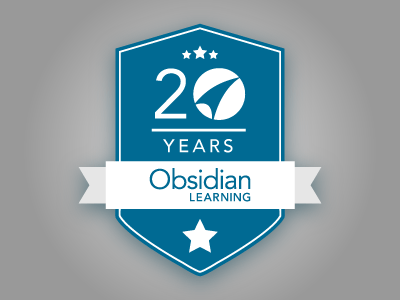Do you like music? Have you ever been listening to a favorite piece or song, only to have your good vibes interrupted by a discordant note? Or even worse, a remix? The flow is brutally interrupted. If I’m listening to the radio when something like that happens, I change the station.
As someone who suffers from a slight case of (self-diagnosed) obsessive compulsive disorder with regard to quality control, that is often how I feel when I come across a beautifully designed piece of learning that is riddled with mistakes, be they technological (the drag and drop doesn’t drag and drop), grammatical (subject/verb agreement, people!), or typographical (drives me cazy).
There you are sitting in front of your computer, clicking through a snazzy CBT, and all of a sudden it starts bugging on you. The learning checks don’t function, or the navigational arrows won’t take you where you need to go. Will you remember the content that you attempted so valiantly to access? Or will you aggressively remember that the CBT was not functional? Monty, I think I’ll go for Door No. 2.1
Let’s take this same CBT, blessedly free of technological snafus, and imagine that its subject is worksite safety. Again, you’re clicking merrily along, and all of a sudden, there it is: Workshite Safety. Everywhere. On every page. Are you going to be able to focus on the serious safety message, or are you going to be giggling throughout the course, and most particularly when you get to the completion screen: Congratulations, George! You has successfully completed the Workshite Safety course! Again, this is a needless – and completely avoidable – distraction.
Completely avoidable? Yep. Totally, absolutely, completely avoidable. How, you ask? (And I’m so glad you did!)
- Collaboration is key. Unless you are that rare gem that is possessed of all of the optimum qualities relative to learning design, you will need to collaborate with professionals that have complementary skills. A qualified instructional designer might be über-talented when it comes to mapping out learning strategies, but might be less gifted when it comes to graphic design. And a really fantastic graphic designer might have truly creative ideas and have the technical know-how to implement them visually, but might not be the strongest wordsmith and/or copyeditor.
- It is difficult to fully edit your own work. Which is not to say that you get a pass on producing high quality materials; proper spelling and grammar conventions should be respected as much as possible, and whatever role you are playing in the process, it doesn’t take that long to do a spell check. However, when you’ve been working on the same bit of learning design for an extended period, it is not difficult to see how situational blindness can develop. Your global view of the deliverable can prevent you from seeing the small bugs that might have crept into your CBT (that worked just fine 5 minutes ago) or the extra period at the end of a sentence. A fresh pair of eyes can do wonders for the final product. And if that fresh pair of eyes happens to come across a longer list of items than you expected, rejoice! Your client will be all the more impressed with the quality of your work, and your learners will be able to focus on their learning experience.
Effective learning occurs when the discordant notes are at a minimum; innovative design, flawless execution. At Obsidian, our team of learning professionals, graphic designers and nitpickers (guess where I fit in) works together to provide deliverables of the highest caliber.
-
For you young’uns, that is a reference to a 60s-70s gameshow, “Let’s Make a Deal” ↩







